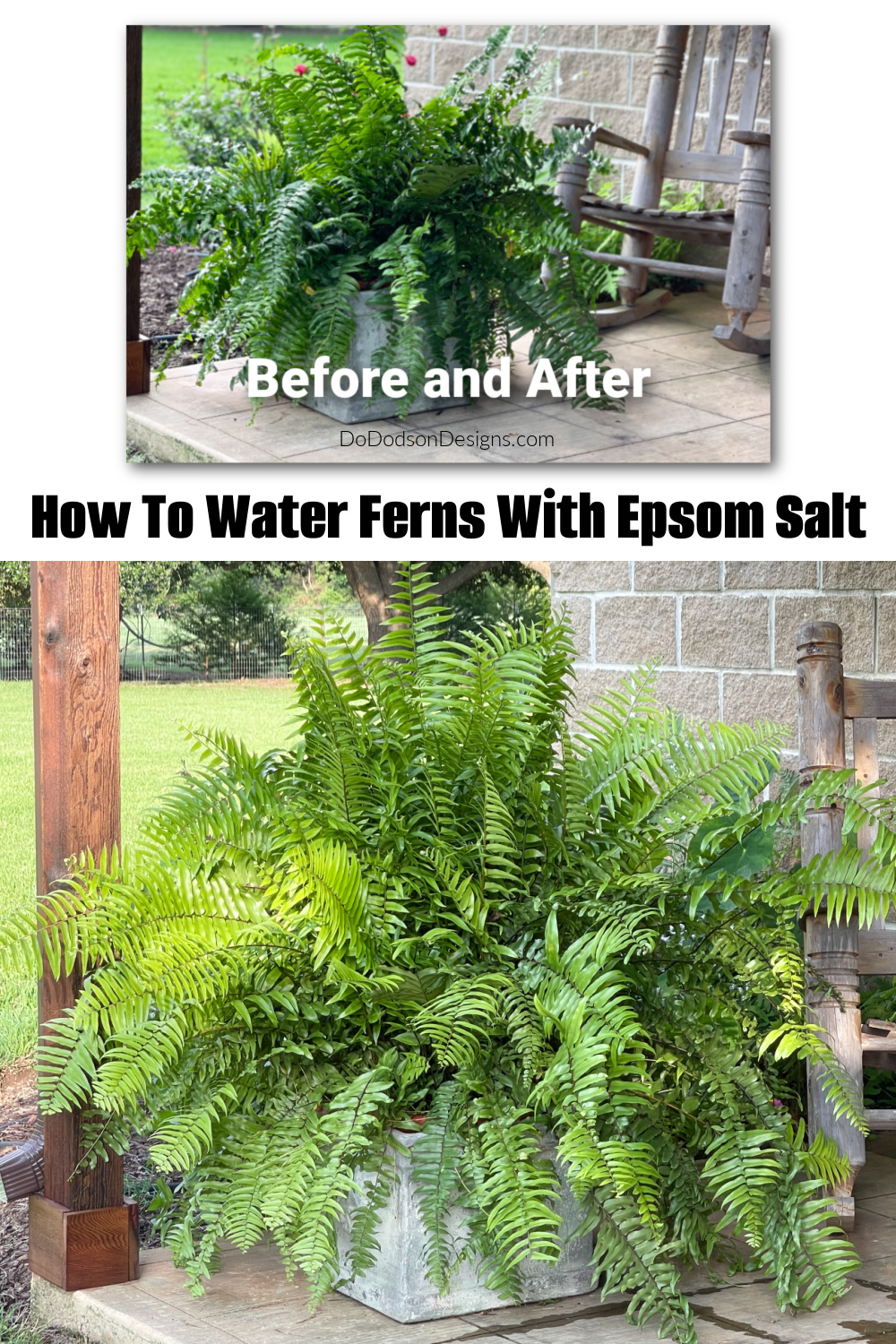
Hey triple-D friends! SHOCKER! I’m back in the garden, and if you love ferns, you know they’re beautiful, delicate plants that require specific care. What would you say if I told you that I found something that’s going to help your ferns thrive? It’s an unexpected way to give outdoor ferns a boost. Not only is it simple to do, but the benefits are impressive.
* As an Amazon Associate, I earn from qualifying purchases and through other companies as well. You will not be charged extra when you purchase through these affiliate links, but any income I make helps me create more amazing DIY projects to share with you! To see my full disclaimer, click here!
The Surprising Benefits Of Using Epsom Salt To Water Your Ferns
Do you have outdoor ferns at home in pots that you struggle to keep healthy and green throughout the warmer months? Spring, Summer, and Fall. You’re not alone.
Ferns are notoriously finicky plants that require just the right amount of light, moisture, and nutrients to thrive. But what if I told you that there’s a simple and surprising solution to your fern woes? Epsom Salt
This common household ingredient can work wonders for your ferns, promoting growth and preventing yellowing leaves. Today, we’ll explore the benefits of using Epsom salt to water your ferns, explain how it works, and provide easy-to-follow instructions for incorporating it into your fern care routine. Get ready to see the impressive results for yourself.
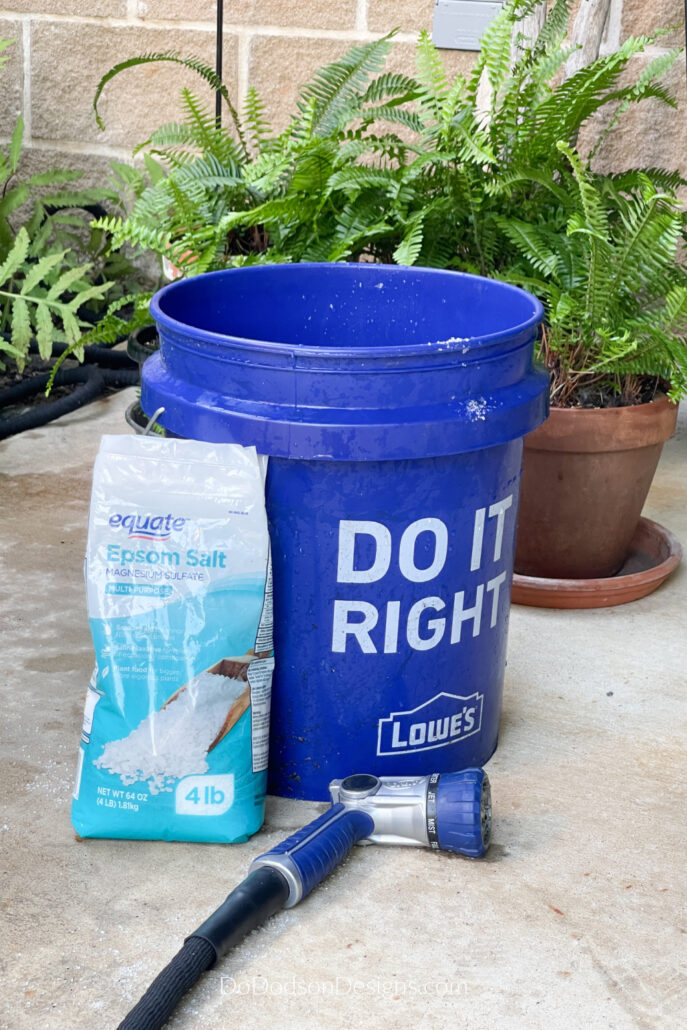
SUPPLIES
- Ferns
- Epsom Salt
- A 5-gallon bucket of water
What Is Epsom Salt, and How Does It Work?
Epsom salt may be a household staple, but not everyone knows what it is or how it works. Essentially, Epsom salt is a mineral compound made up of magnesium and sulfur. It is named after the town of Epsom in England, where it was first discovered in mineral springs. When dissolved in water, Epsom salt releases magnesium and sulfate ions, which plant roots can absorb. These essential nutrients can support the growth and health of your fern, improving its overall appearance. We all want luscious green ferns, and this stuff works!
The Benefits Of Using Epsom Salt For Ferns
Incorporating Epsom salt into your fern watering routine can provide a variety of benefits for your plant. Due to its magnesium and sulfate content, Epsom salt can aid in the growth of your ferns and improve their overall health. One of the primary benefits of using Epsom salt is that it can help prevent leaves from turning yellow, a common issue among ferns. Additionally, Epsom salt can assist in the production of chlorophyll, which is essential for photosynthesis and the plant’s energy production.
Also, adding Epsom salt to your fern’s water can aid in the absorption of other nutrients present in the soil. This can result in better root development, which in turn leads to stronger and healthier plants. The added magnesium from Epsom salt can also encourage the production of new leaves, ensuring that your ferns remain lush and vibrant.
With these benefits, your ferns will thrive and look their best.
How To Use Epsom Salt To Water Your Ferns
To be perfectly clear, when I say potted ferns, I’m talking about the plastic pots you purchase yearly from a nursery because, like me, you probably allow them to die over the winter. It’s just easier to buy new ones every year, and they’re quite affordable. These ferns typically come with a massive root system with more roots than soil, so this method of watering works very well for them.
To use Epsom salt to water your ferns, first, fill a large bucket (I use a 5-gallon bucket) with water. Then, add two tablespoons of Epsom salt for every gallon of water and stir well. Make sure the Epsom salt is completely dissolved before watering your ferns.
I usually fail to grab a measuring spoon, so I just eyeball it. Kind of like when I cook. If your Grandma didn’t teach you how to measure in your hand, use a measuring device.
I recently repotted some ferns in clay pots that have a lot of soil surrounding them. This method isn’t recommended for heavy pots. But I do water them with the same solution using a watering can.
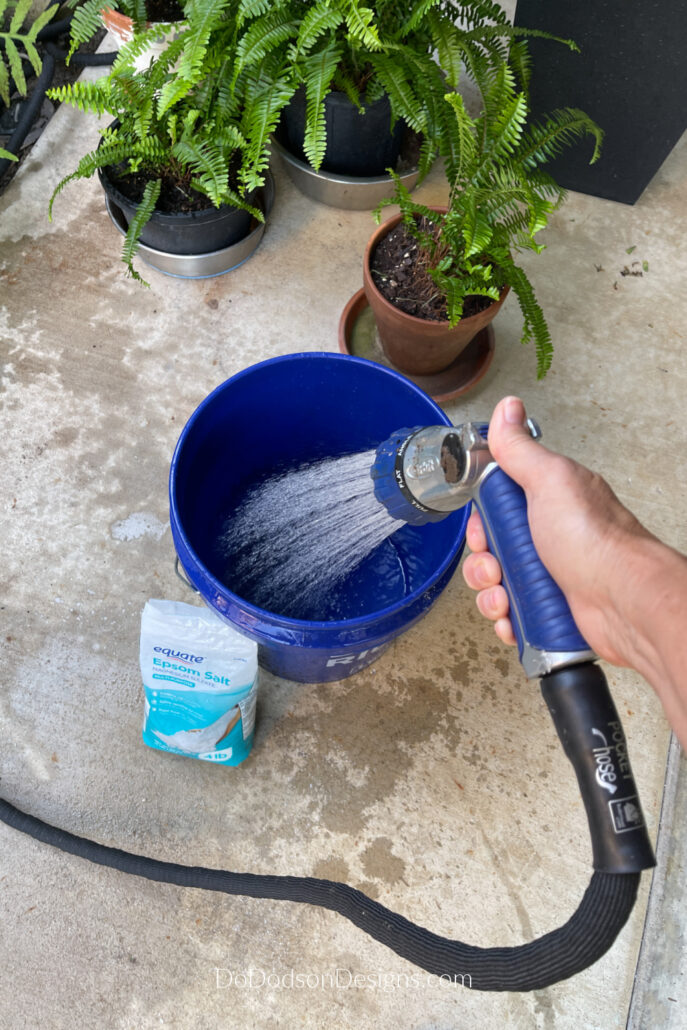
Give Your Ferns A Good Soaking
Next, submerge your fern (plastic container) in the 5-gallon bucket. When I say submerge, I mean hold it underwater and continue to keep it underwater until it is totally saturated. You’re going to hear a lot of gurgling. LOL, It will kind of sound like it’s drowning. It will stop after a few minutes. Don’t call 911. And just so you know, no ferns were harmed during this exercise.
Allow the fern to soak in the solution for a minimum of three hours. After that, remove it from the bucket and allow it to drain before returning it to its container. If your ferns are in hanging baskets, return them to the hanger to allow the excess water to drain.
Do not allow water to sit in overflow containers if you’re using decorative planter boxes. This can lead to root rot and is not good for ferns.
I like mine to soak for a few hours. This gives the roots enough time to absorb as much as possible. I have heard other plant enthusiasts suggesting leaving them soaking overnight. I’ll let you know if I try it.
I find that my ferns do best when watering from below. Of course, if it’s raining, I will set them out for a nice bath. There’s nothing better than rainwater.
*Ferns prefer evenly moist soil, so check on them daily to maintain a good balance.
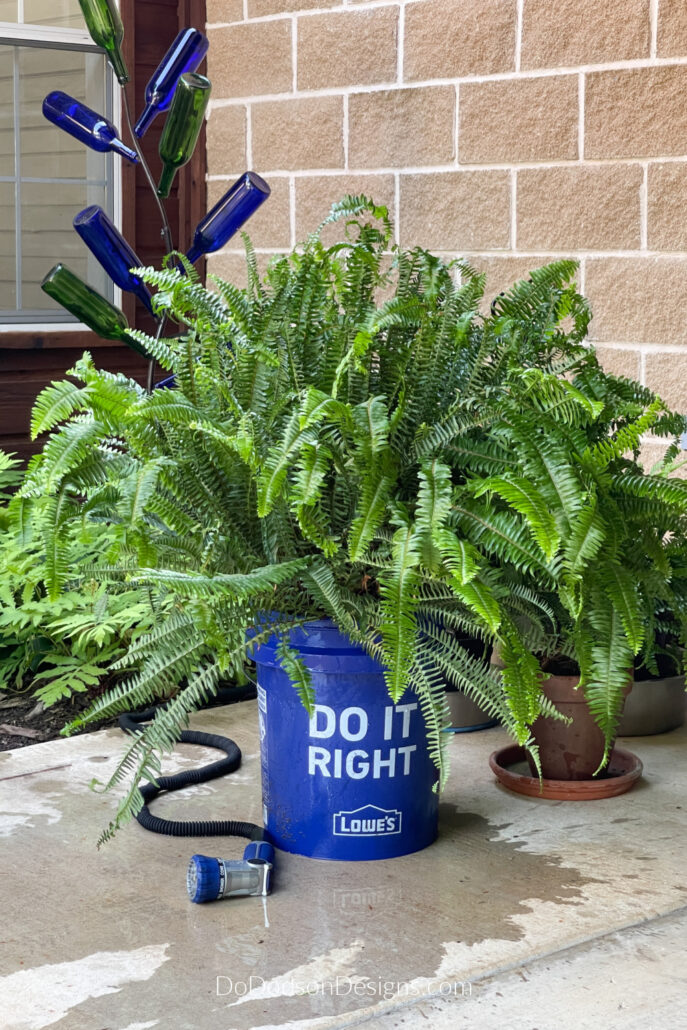
How Often Should I Soak My Ferns With Epsom Salt?
Using Epsom salt and water to soak your ferns every couple of weeks (in addition to regular watering) is an easy and affordable way to promote healthy growth and development. With just a small amount of Epsom salt, you can help prevent yellowing leaves, improve chlorophyll production, and aid in nutrient absorption.
Now that you know how to use Epsom salt to benefit your ferns, let’s look at some other tips for keeping your ferns healthy and looking their best.
Other Tips For Keeping Your Ferns Healthy Outdoors
Firstly, remember that potted ferns prefer consistently moist soil. Avoid letting their soil completely dry out, as this can lead to wilting and leaf drop. To keep their soil moist, water your ferns regularly. During the hotter Summer months, I water mine daily.
Secondly, provide your ferns with the right amount of light. While they prefer bright, indirect light, direct sunlight can scorch their leaves. Most ferns can handle a small amount of gentle morning sun or dapple sun through trees, so be sure to be mindful of where you place them.
A covered front porch is my favorite location. A hanging basket can add much curb appeal to your home.
Lastly, now is a great time to inspect and clean up any unsightly, dead, or broken fronds. Removing these is easy. Use a clean pair of nippers or scissors (not your fabric scissors like I just did) and snip, snip.
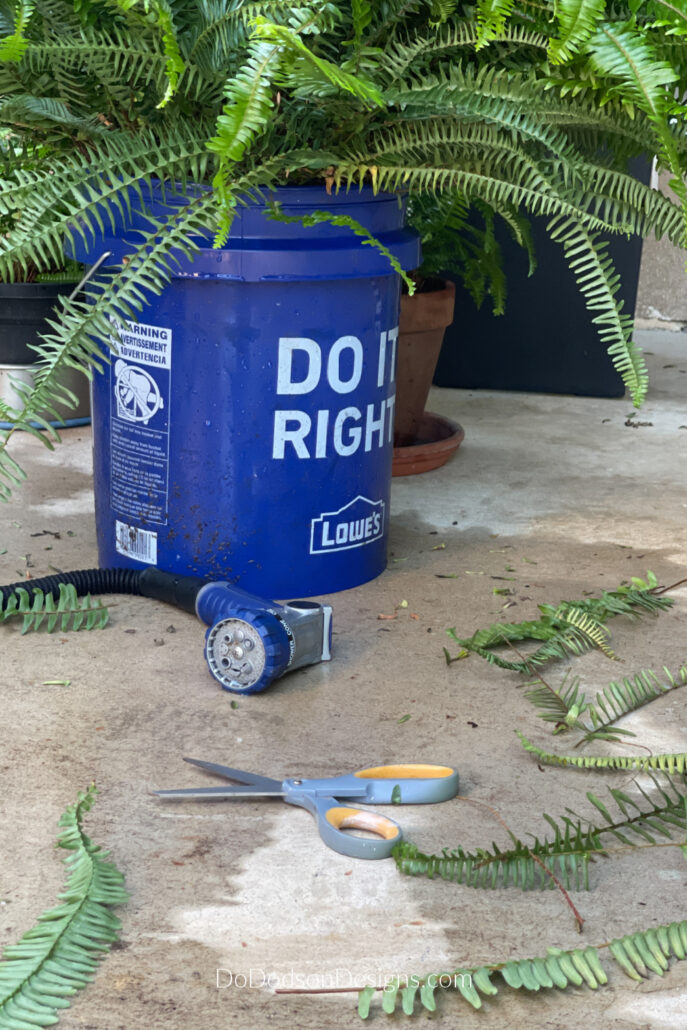
Watch Out For Pests
Keep an eye out for pests and diseases while you’re trimming. Common pests that can affect ferns include caterpillars, spider mites, scales, thrip, and mealybugs. If you notice any signs of damage or infestation, take action quickly by isolating the affected plant and treating it with an appropriate insecticide or fungicide.
By following these tips, you can help ensure healthy plant growth and add a touch of green to your home.
Here’s another great resource I found about how to care for ferns. CLICK HERE to read it.
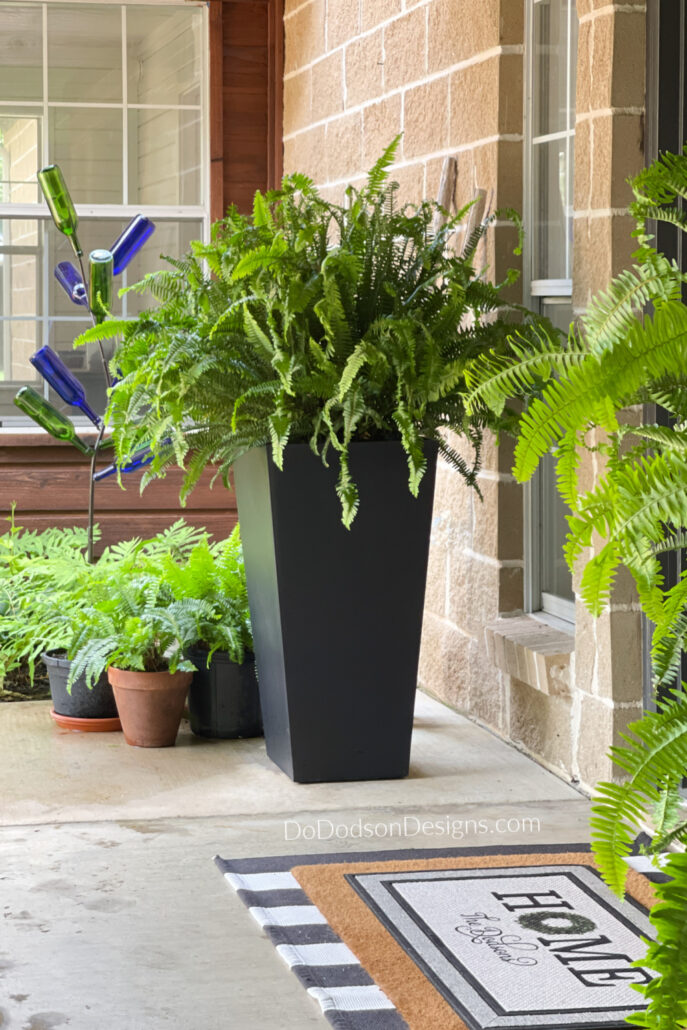
Incorporating Epsom salt into your fern care routine is a simple and effective way to promote growth, retain water, and prevent yellowing leaves. With just a few easy steps, you can give your ferns the boost they need to thrive and add a touch of greenery to your home. As you experiment with this surprising method, remember to follow my tips for keeping your ferns healthy and happy.
Give it a try and see the incredible benefits for yourself – your ferns will thank you!
Thanks for joining me today! Please feel free to share your thoughts and opinions about this subject in the comment section. Do you have words of wisdom to add to this? Spread the love and joy of gardening so others may benefit.
And don’t forget to walk barefoot through your gardens. 🙂 It will keep you grounded and be good for your soul.
Until the next project… xo, Do


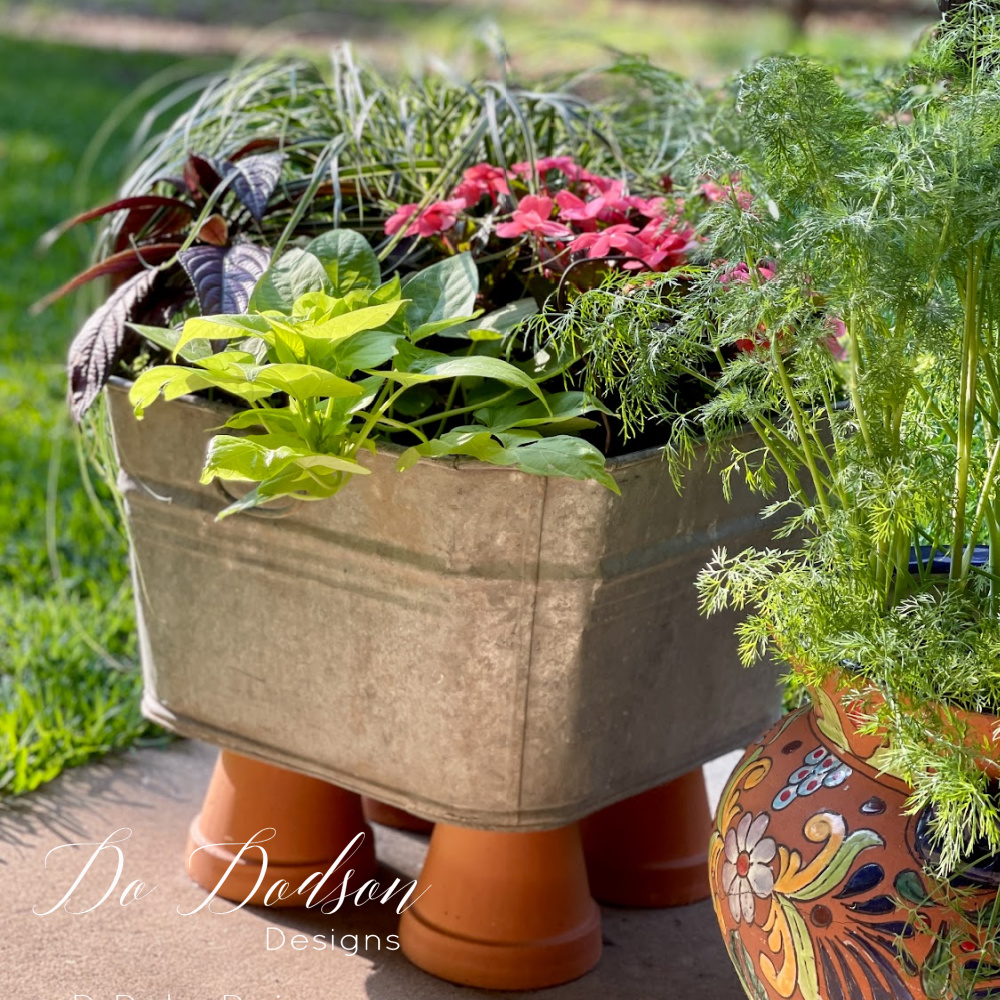
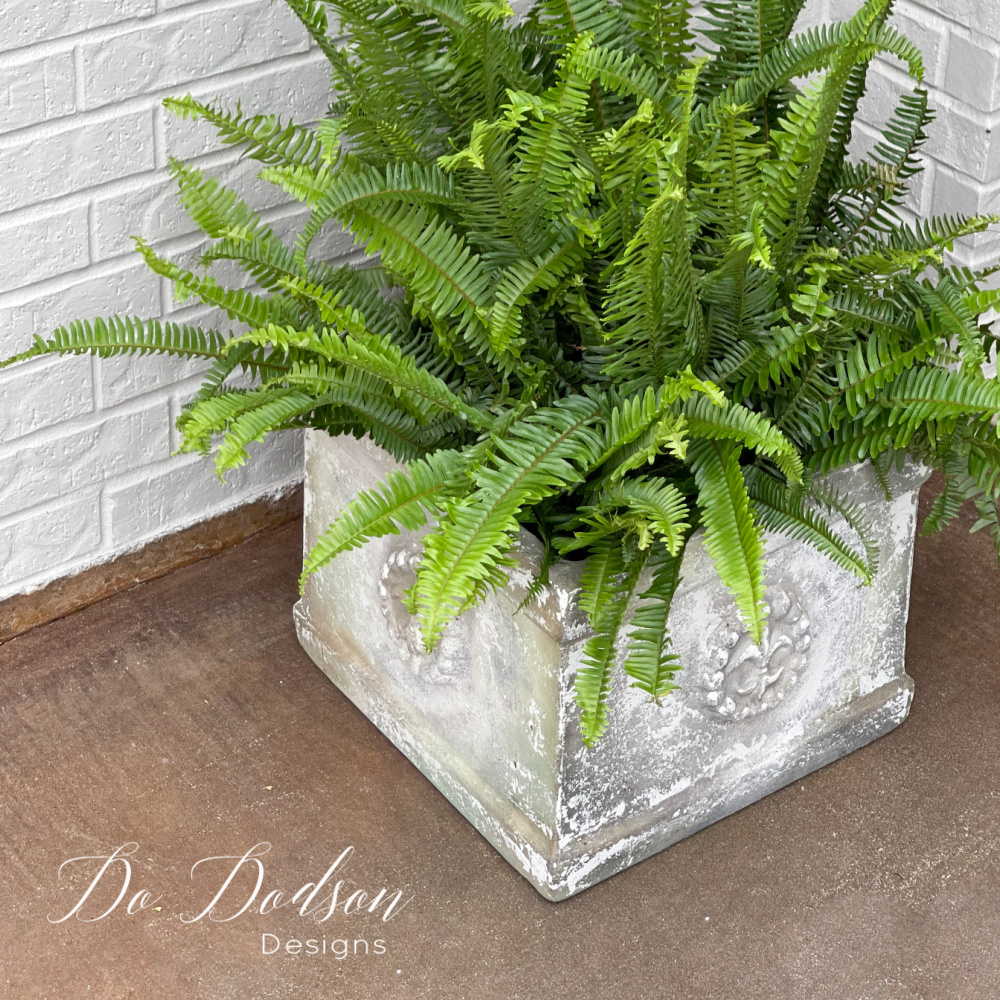
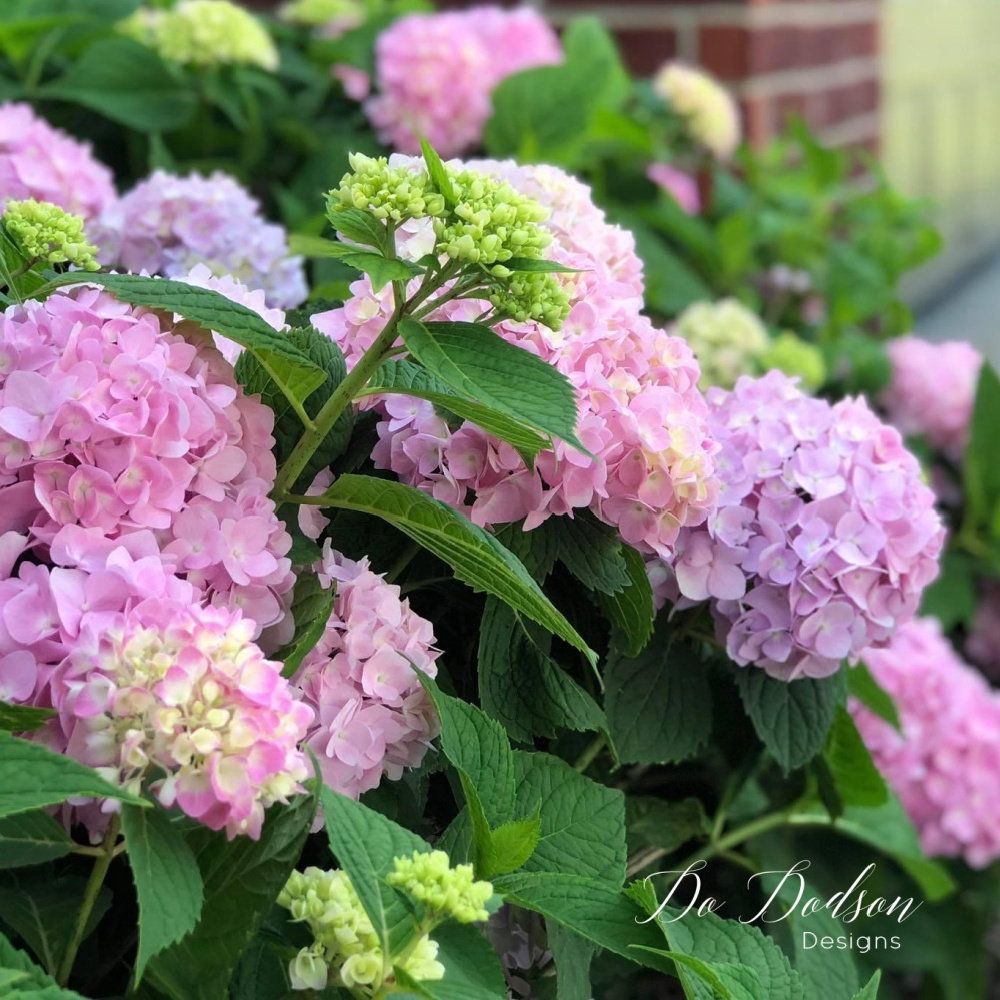
Love you new site. It looks amazing. I did not know to use Epsom on my ferns. I am going to give it a try. Thanks for sharing.
Hey Tammy! It has done well for me over the years. Give it a try and let me know. Your gardens are gorgeous, by the way. 🙂
I’ve never heard of this before. I cannot wait to try it, the heat is killing my ferns and they are under cover.
Hi Elizabeth!
I can’t say it will protect your ferns from the heat, but it will make them healthier to possibly handle the heat a bit better. I also water mine twice daily when the temps near 100 here in Texas. I hope this helps. 🙂 xo
I have hanging Ferns I cant set them in a 5 gal. bucket so how can I do the Epson salt for them? Thank You
Hi Wanda, Yes, just mix up the epsom salt and water solution and give them a drink once a week or so.
Hi,
Can you tell me how much Epsom salt to add to a gallon of water to feed my Boston ferns please?
Hi Glenda. I use 2 Tbsp per gallon to water my ferns. I do this about once a week if I’m not soaking them. I hope this helps. 🙂
Would Epsom salt also assist maidenhair Fern pls
I have never had a maiden hair fern but I don’t see why not. I use it on my indoor and outdoor plants and have never had any issues. 🙂
Great article! But one question, where you said “To be perfectly clear, when I say potted ferns, I’m talking about the plastic pots…”—as opposed to…? Mounted ferns? Are they exempt from the benefits of epsom salts? Haha. Sorry if I’m dense.. I’m about to do this right now, for my outdoor blue star, rabbit foot, maidenhair, kangaroo paw, bird’s nest & more!! Zone 10b, coastal San Diego. 😎 🌊
Thank you! I’m so glad that has helped you and I sorry for the confusion. Potted ferns that you purchase in plastic pots. But even if you have ferns in the ground, those too will benefit from Epsom salts. I like to sprinkle a Tbsp around the base of my garden plants and water it in. Hydrangeas love it too. I hope this clears things up.
Happy gardening! xo Do 😘
Since I have an old fern I recently put in a coconut liner would it help to just water with the Epsom salt water?
Yes, you can. Soaking is better because it allows all the roots to get a drink. When you water from above, not all roots get feed. I hope this helps. Have a beautiful weekend. 🙂
Help. lol. I only have scented Epson salts. Can I use them?
Hi Debbie,
The scented epsom salt gets its scent from essential oils. I would be hesitant to use it on plants. Luckily, Epsom salt is inexpensive. You can pick up the off brand at Walmart. It goes along way.
Good luck with your ferns. 🙂
What is the purpose of the wine bottles in the background of the fern? Looks pretty, so a “how to” would be appreciated. Thanks for the fern info. My fern is 8 years old, and I am going to try the Epsom salt.
Hi Barbara! The wine bottles in the back ground of the ferns is a bottle tree. I purchased off of Amazon. Purely decorative. 🙂 Thanks for reading and I hope you have a wonderful weekend.
Do I need to change the bucket water for each fern?
Hi Amy! No, I use the same bucket for all the ferns. The only time I change it is when the water gets too low. Then I pour out what water is left in my flower beds. I hope this helps. 🙂
I mostly struggle with the birds making my ferns their home. I’ve had many babies born in my ferns.
Hmmmm, can’t say that has ever happened in mine. But I bet it’s fun to watch them. 🙂
Don’t have a gallon bucket can I put it in wash bucket with the Epsom salt? Will it absorb that way? Thank you.
Yes, of course. Whatever container you have that is large enough to submerge you fern container in will work. I’ve even used large trash cans for my bigger ferns. Good luck. 🙂 Enjoy those ferns! 🪴
I always enjoy (and look forward to) getting your inspiring and informative newsletters! Question: Would Asparagus fern benefit from an Epson Salts soak?
Thanks.
Thank you, MaryJo! Absolutely. I’ve had asparagus ferns in the past. 🤔 Maybe I need to add them back to my collection. Have a great weekend. 🙂
Can Epson salt also help fern that are planted directly in the ground? I have a collection of different hardy ferns and would love to see them flourish as well.
Absolutely. I have cinnamon ferns that are perennial in my zone. I sprinkle a small handful around the base of the ferns in early Spring. They are by far the prettiest ferns I have. Good luck with your fern collection.
Will Kimberly ferns last outdoors in the center of my yard in Mississippi heat and also how do I take care of them
Hi Brenda,
I like the Kimberly Queen ferns for pots and hanging baskets. If the middle of your yard is shaded as in under a tree, perhaps. But in the heat, they will need daily watering. For this reason, I prefer them on a shaded porch. Here’s a post I wrote about them. I hope this helps. 🙂
https://www.dododsondesigns.com/front-porch-ferns/
Do you over winter your ferns? What is the best way to do this?
Yes, ma’am I do. Here’s a post about how I over winter them. https://www.dododsondesigns.com/things-you-should-know-to-keep-ferns-alive-in-winter-months/
I bought 6 spiked ferns for my apt. patio not realizing that they were shade plants. I’ve given 4 away b/c
I just gave up. I just read your article about epsom salts & will try that. I have breathing problems & will dig out a humidifier 4 them, but it bothers my breathing more. A neighbor told me 2water w citris
dish soap & I almost killed them doing so. Thanks so much for new info.
Hello Sharon,
I’m so glad that you enjoyed reading about these amazing plants. They bring me so much and it’s fun to watch them grow and thrive. Have a beautiful week.
🙂